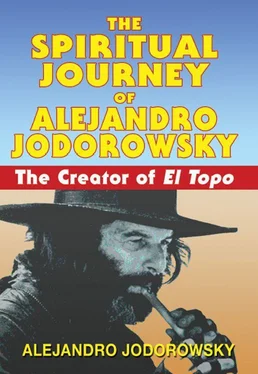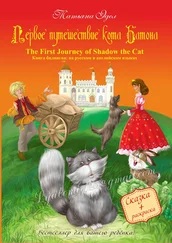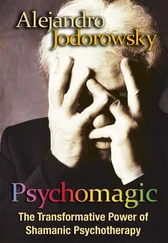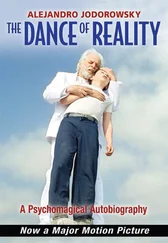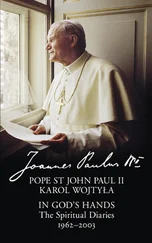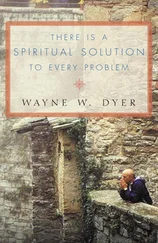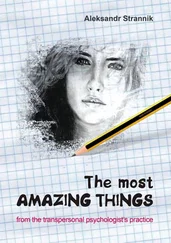Daniel tried to thank me, but I left in a hurry.
The trees in the forest were half hidden in a grayish, toxic, morning smog. In a clearing at some distance from the hordes of automobiles rushing like sheep to the slaughterhouse, Ejo and I had established a custom of meditating for two hours at six o’clock in the morning. I found him there, in zazen position. He was wearing jeans and a black T-shirt. Beside him was a mesh sack. I prostrated before him and placed the stick and fan in front of him.
“You are mistaken, Ejo. I am not a master.”
He shouted “Kwatzu!” at me so loudly it must have been heard a mile away. Then he seized me by the shoulders and forced me to sit in his place. He kneeled before me, touched his forehead to the ground, and spoke softly:
“Sometimes we are disciples, sometimes masters. Nothing is fixed.”
I did not want to accept this. I took him by the shoulders and sat him again in his place. I prostrated again before him, pressing my face obstinately against the ground three times.
Sighing with exasperation, Ejo recited a text that he had apparently learned by heart: “Are we ourselves? Where are we when we are? If I close my hands, water still escapes from them. When these hands play the lute in the moonlight, they are like the hands of the Buddha. Master Rinzai said: ‘Sometimes a cry is like a precious sword molded of the purest gold. Sometimes a cry is like a magnificent lion merged with the bushes. Sometimes a cry is like a fishing pole in the middle of the grass in whose shadow fish gather in a group. Sometimes a cry does not function as a cry.’ A monk asked him: ‘What is the meaning of the first maxim?’ Rinzai said: ‘When the seal is removed, the red ink becomes visible. Though the letter has not yet been read, the roles of the guest and host are already decided.’ The monk asked again: ‘What is the meaning of the second maxim?’ Rinzai said: ‘Careless one! Why should the work be inferior to the ideal?’ The monk insisted: ‘What is the meaning of the third maxim?’ Rinzai said: ‘When the puppet dances on the stage, the movement comes from the hand of the actor hidden in its clothes.’ And he added: ‘If you understand the first maxim, you will become the Buddha’s master. If you understand the second maxim, you will become a master of men and gods. But if you understand the third maxim, you will not even be able to save yourself.’ Then he continued: ‘Sometimes you remove the man without removing the surroundings. Sometimes you remove the surroundings without removing the man. Sometimes you remove both. Sometimes you remove neither.’”
These words, recited rapidly by Ejo, engraved themselves in my memory. I can regard them from several points of view. Their apparently different elements fit together like pieces of a jigsaw puzzle. An understanding came to me through these words like luminous flashes (I can find no better metaphor for it). Ejo was now showing me the higher level of koans!
Are we ourselves? It is impossible to define ourselves, for we do not belong to ourselves; we are the world. Where are we when we are? Reality is formless and fluid, constantly changing. The dry leaf carried away by the stream is in the water, not in a place. If I close my hands, water still escapes from them. If my intellect identifies itself with a separate self, it does not capture eternal truth. When these hands play the lute in the moonlight, they are like the hands of the Buddha. The Buddha imagined by our intellect lacks any hands. When my hands produce beauty, they are the hands of the cosmos. All things are one and one thing is all things! Sometimes a cry is like a precious sword molded of the purest gold. The master transmits his satori directly to the disciple without words, like an electric shock. Sometimes a cry is like a magnificent lion merged with the bushes. The master seeks to open the stagnant mind of the disciple, who believes the world is dark because his eyes are shut. Sometimes a cry is like a fishing pole in the middle of the grass in whose shadow fish gather in a group. The master penetrates the unconscious of the disciple, trying to bring light to his hidden treasure, his essential being. Sometimes a cry does not function as a cry. The master cries without finality, naturally and spontaneously, from the highest heaven to the depths of the earth. It is thunder resounding in the blue sky with a bright sun. There is no disciple. There are two masters.
What is the meaning of the first maxim? The monk is looking for truth in the meaning of Rinzai’s teachings. Rinzai tells him not to ask such questions, but to trust his inner treasure and surrender himself to meditation. When the seal is removed, the red ink becomes visible. Though the letter has not yet been read, the roles of the guest and host are already decided. Though I am not capable of understanding the teaching, I must give myself to the work that submerges me in essential being. Ejo is the seal, I am the sealed letter. I must remove the seal in order to find myself and know that this self is the same as that of Ejo, and the Buddha.
What is the meaning of the second maxim? The monk remains a prisoner of his search for ideal truth, for a personal self. Why should the work be inferior to the ideal? Without feeding words to the ravenous intellect, sit calmly, concentrate, and observe the unfolding of life until you are yourself the truth: this is the way.
What is the meaning of the third maxim? There is no distinction between a first, second, and third truth. There are no degrees. Unity acts bluntly, like a hammer blow that breaks open our head. When the puppet dances on the stage, the movement comes from the hand of the actor hidden in its clothes. In the beginning, the master is the puppeteer and the student is the puppet. Finally, the student understands that the master is a force inside him, a force that does not belong to him.
If you understand the first maxim, you will become the Buddha’s master. If you understand the second maxim, you will become a master of men and gods. But if you understand the third maxim, you will not even be able to save yourself. The reality that appears to us as something different in different situations is what it is, neither more nor less. In reciting these maxims, you can imagine yourself as a master greater than the Buddha. Like a blind man’s dog, you think you are leading essence. You set up differences between men and gods, you have the impression that awakening has two faces, you make judgments about right and wrong so that finally you cannot even find yourself.
Sometimes you remove the man without removing the surroundings. This is an attitude of the mind in which the object dominates the subject. You abstract the man (subject), but not the surroundings (object). Sometimes you remove the surroundings without removing the man. Here, the mind fixes on the subjective pole, but it denies the objective. Sometimes you remove both surroundings and man. This is a state of emptiness in which the distinction between self and other is eliminated. Sometimes you remove neither the surroundings nor the man. In complete unity with yourself, like a child, you act spontaneously, thus returning to the ordinary world. Subject and object are recognized “as they are.”
Ejo sat in meditation before me, indifferent as a mountain, but I knew that in some way, he was waiting for me. The situation was so important that my mind lost track of time. In a few seconds, I was able to complete thoughts that would have taken hours in other circumstances. The concepts of guest and host occupied my attention. Which of us was which? At first, I saw Ejo as the host, the one who was offering consciousness, and myself as the guest who is asking for consciousness. Yet this relation of master and disciple, subject and object, confused me. One of us represented the world of circumstances. Was it me? Then was Ejo the other, the one who produced them? He was the only totally honest man I had ever known in my life. I loved him with the love of an orphan looking for a father. He knew everything, I knew nothing. . Stop it, Alejandro! Enough of that sentimental self-indulgence! Was I seeking truth or a loving father figure to heal my sad, abandoned child?
Читать дальше
